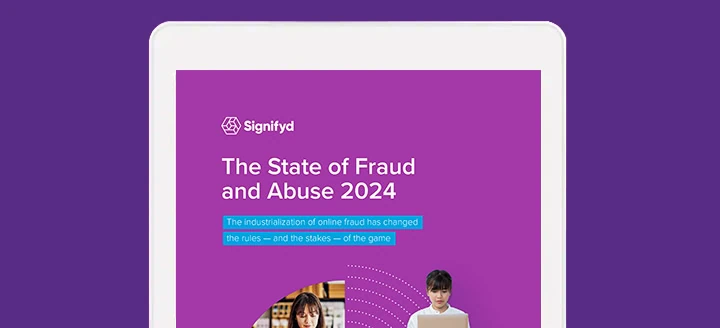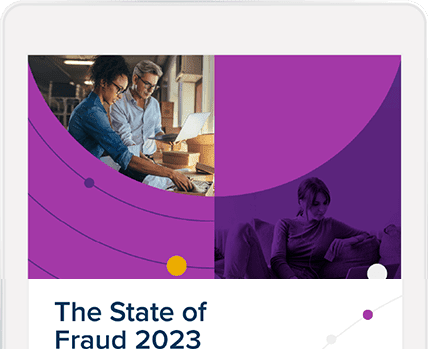First-party fraud (aka friendly fraud) is a growing problem for retailers’ bottom lines and, in some cases, speaks to a less-than-perfect customer experience. To combat this threat, retailers have faced a difficult balancing act between a customer-friendly experience and protecting already tight margins. But every crime leaves clues. And with a combination of AI and human expertise, retailers can keep customers happy, the bottom line healthy and friendly fraudsters at bay.
Unlike more traditional fraud, where fake names, mismatched addresses or dubious payments provide actionable clues before or during check-out, friendly fraud is more difficult to detect and expensive to remedy. That means merchants need to be mindful of gaps in AI fraud detection when it comes to friendly fraud.
With friendly fraud, the customer info squares up — it’s a real name, valid card, matching shipping and billing addresses, verified email, and often, a long-standing relationship with the retailer. But with friends like these, who needs enemies?
There are two types of malicious friendly fraud and one variety that actually is friendly, or at least not intentionally unfriendly. The two malicious types each employ similar tactics, a customer claiming they never received the item or that the product was not as described. If the fraud goes as planned, they get their money back and keep the merchandise.
There are different types of first-party fraud
The first type of friendly fraud stems from people with bad intentions. They have a plan – take advantage of a retailer’s return policy to put money and goods in their own pocket. Many will test the waters with a retailer, finding the cracks in their policies and looking for gaps in AI fraud detection in order to more aggressively reap ill-gotten gains. Most are individuals, although some operate in broader criminal organizations, which have increasingly seen retail fraud as a reliable revenue stream. Many of the products find their way to the black market or resale sites.
What are the two main types of malicious first-party fraud chargebacks?
Signifyd Senior Director of Chargebacks and Abuse Tara Mitchell breaks down what to look for in friendly fraud chargebacks and how to avoid the worst of them.
The second group of fraudsters came in with good intentions before something in the customer experience went awry. They “feel” they were somehow wronged and seek to right their perceived wrong by claiming they were defrauded in the transaction. For example, say a product purchased as a gift doesn’t arrive in time for the holidays. Although the frustrated consumer received the product, they claim it was damaged, feeling they were owed and exacting their revenge.
The third type of friendly fraud is much more accidental. It stems from individuals simply not recognizing purchases or family members borrowing cards in good faith but the cardholder doesn’t remember and files a chargeback. Those misunderstandings show up as fraud chargebacks but they don’t represent any bad intention by the buyer at any point.
Detecting and preventing fraud are two different things
Those accidental forms of friendly fraud are solved with better credit card descriptors so consumers recognize the businesses they ordered from and with clearer communication involving receipts and orders. By its nature, accidental friendly fraud is all but impossible to predict. And it’s best prevented by top-notch customer service.
Whatever the cause, the scale of friendly fraud is massive, although some sectors are hit harder than others. In total, cases were up 13% in the last year with the average claim value reaching $259 (up 2% in the last year). Electronics, luxury goods, beauty and cosmetics, auto parts and apparel were the top friendly fraud verticals in the last year, likely due to their high price per item and excellent resale value. It helps that competition for customers in these verticals is fierce, forcing retailers to lure customers with generous return policies. It’s a fraudster’s market.
Interestingly, groceries and home goods are the fastest-growing friendly fraud verticals. The question about that vertical is…what types of products? Are the claims that the bananas were smashed in shipping by subscription shoppers who found a way to shave a few bucks off each grocery bill? Or high-end throw pillows that “never showed up” yet quickly appear on resale sites? As you can see, each retailer needs to do a deeper data dive to tease out exactly how they’re being targeted by friendly fraud.
Machine learning and human intelligence is the way to combat friendly fraud
Unfortunately, the traditional approach to mitigating fraud isn’t great at separating the signal from the noise. Many retailers focus on the front end, rejecting orders that show any sign of potential fraud. But a lack of precision leads to false positives, rejecting revenue and alienating potential customers, who had no intention of defrauding the retailer but were flagged for some reason during checkout.
For those friendly fraud instances that get through the purchase process, pursuing the case is a challenge, often involving back and forth with the consumer and their credit card company. In other words, this approach is expensive, time-consuming and inefficient.
Fortunately, friendly fraud provides clues that a combination of technology and human expertise can act upon.
AI systems can help get a handle on friendly fraud
Bad actors with a plan to commit friendly fraud often exhibit patterns of behavior. For instance, they may have a high refund/dispute rate with a particular retailer. Or a customer with a perfectly fine transaction history may suddenly have a spike in their refunds. These patterns, which can be tough to see on a single retail site, become more stark when viewed across multiple sites.
“Having the ability to pull in a breadth of evidence across merchants is materially different than where we used to be,” says Tara Mitchell, Signifyd’s senior director of chargebacks and abuse. Mitchell says the ability to see across retailers, as Signifyd’s platform does, allows AI to detect these bad actors’ patterns of chargeback abuse in real time. With such a large dataset – Signifyd sees 600 million digital wallets across their customer sites – the criteria for accepting or rejecting an order is more accurate than the detection a single retailer, even a large one, is able to achieve. And since those serial fraudsters are screened out on the front end, retailers can keep their customer-friendly return policies in place knowing they’re less prone to abuse.
But what about the customers who came with good intentions before veering off into friendly fraud after checkout, shipping and unboxing are complete? Once again, Mitchell says, AI and human expertise are the key to a retailer building and pursuing a case.
AI-powered models help merchants scale up friendly fraud detection
Each refund/dispute runs through an algorithm that scores it and looks for evidence of friendly fraud. “Every case with evidence gets investigated,” Mitchell says.
Those investigations are where human expertise comes into play with a look across retailers for patterns of abuse and even the occasional deep dive into social media. Sometimes there is a clear “motive” that sent this previously upstanding customer off the edge, such as a known issue with a product or a difficult holiday delivery timeline. But for investigators, having a prioritized case list complete with a packet of evidence is a giant leap forward.
“The most I ever did in a day was 40 and I was really good at it,” Tara said when describing the difference between the old approach to friendly fraud investigations and an AI-enhanced approach. Now she says her team blows past that and is able to focus on the cases with the best chance for resolution. Any back and forth with the customer’s bank is more efficient and effective.
For retailers looking to maintain margins and provide a generous return policy, AI and human expertise are the key to unfriending friendly fraud.
Photo by Getty Images
Looking to stop first-party fraud? Let’s talk.







